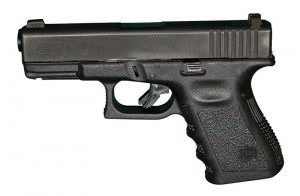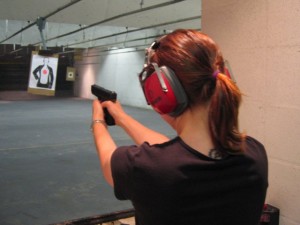ANALYSIS: Hawaii’s Gun Laws Worth Imitating
“Guns don’t kill people. People kill people.”
Or so the saying goes. It’s true that most firearms haven’t yet become self-aware killing machines. Guns still typically require both a trigger and a human finger to operate.
And murder is a uniquely human achievement.
Unless you’re willing to break a sweat, a firearm is one of the easier ways to extinguish the life of another. Indeed, statistics show that the easier it is to access a gun, the more likely you are to perish from a bullet.
It’s a trend that repeats itself whether you look at numbers locally, nationally, or worldwide.
Comparing gun deaths in the USA to those of a similarly developed nation like Great Britain for instance draws a sharp contrast.
In the UK, where there are estimated to be 6.2 guns for every 100 people, there are around seven gun murders for every 10 million persons living in the country, in a given year.
The United States, by comparison, is estimated to have nearly 90 guns for every 100 persons in the country, and experiences over 40 times the number of gun-related murders than its British cousin.
Japan, with some of the strictest gun control measures in the world, experienced 11 gun-related murders in 2008. Total. That same year, the United States experienced 12,000. We can also regularly be found near the top of the charts in accidental gun deaths, with over 600 fatalities in 2010 alone.
Despite a gruesome international record though, the United States itself is hardly a war zone, and there are bright spots within the country where gun violence is enviably minimal.
Hawaii happens to be just such a place.
The Aloha State is one of the safest places in the country when measured by firearms-related deaths (hovering roughly among the top three for safest), with a gun fatality rate of 3.6 persons for every 100,000 living in Hawaii, according to 2009 data from the Centers for Disease Control.
That is in contrast to Louisiana, which experienced five times the rate of firearms-related fatalities that same year.
The two states are polar opposites when it comes to ease of access to firearms. While Louisiana is estimated to have some of the most relaxed gun control measures in the country (as measured by the Brady Campaign to Prevent Gun Violence), Hawaii has some of the strictest gun possession laws in the nation.
“Assault pistols” and high-capacity magazines (more than 10 rounds) are both banned in the islands, and handguns in general are strictly regulated, requiring a separate permit for each pistol.
Handgun permits require the completion of a gun safety course, and first-time permit seekers are required to pay for their own fingerprinting. Even weapons inherited by relatives are expected to be registered with the police.
Persons with sufficiently dangerous criminal backgrounds or mental health histories aren’t allowed to possess firearms, and concealed weapon permits are hard to come by, being granted by police chiefs on a case-by-case basis.
These laws of course don’t protect against unregistered firearms that are bought or sold on the black market, or are stolen from legitimate permit holders. But thanks to Hawaii’s natural ocean boundaries, importation of firearms from other states is much more difficult than in the mainland, where guns can simply be driven between cities (according to local police).
California, for instance, has implemented very strict gun control laws in recent years, but importing firearms from states with more relaxed regulations only requires a brief road trip to Arizona or Nevada.
Despite those complications, California’s efforts appear to be paying off, with a firearms-related fatality rate of 8.4 per 100,000, compared to Nevada’s 15.4 or Arizona’s 13.0.
Even Connecticut, home to the recent Sandy Hook school massacre, has seen overall success with its gun control laws, experiencing a rate of 4.9 gun deaths per 100,000.
The Brady Campaign to Prevent Gun Violence regularly ranks each US state on the basis of its gun control measures. Of the top six states on that list (of which Hawaii is included), only California has a firearms-related death rate over 4.9, when compared to statistics from the CDC.
Whether or not the recent uproar over mass shootings leads to some sort of comprehensive national gun control policy, it seems that for other states, Hawaii’s gun control measures are worth imitating.
So, indeed – guns don’t kill people on their own. But a look at the statistics seems to indicate that ready access to them makes the task easier and much more likely to happen.
Sponsored Content
Comments











